When you touch your face or jawline, do you notice it feeling rough? A rough texture on the face can give an impression of uncleanliness. Naturally, many of us would prefer to have smooth, egg-like skin if possible. In this article, we’ll introduce the causes and improvement methods for roughness around the face and jawline. This article will help you understand the causes of facial roughness, methods to improve it, recommended products when your face feels rough, and how to handle roughness in other areas. This article presents the different reasons for facial roughness.
- 1. What causes the roughness and bumps on the face?
- 2. Three Ways to Improve Rough Skin on the Face
- 3. Methods to Improve Rough Skin on the Face Besides Skincare
- 4. Caution! Do not scratch rough skin even if itchy
- 5. How to Handle Rough Skin on Other Parts of the Body
- 5. How to Handle Rough Skin on Other Parts of the Body
- Summary
1. What causes the roughness and bumps on the face?
The main causes of roughness on the face and jawline are disturbances in the skin’s outer layer and a decrease in barrier function. These issues can arise due to wearing masks, UV exposure, skin type, dryness, stress, and age. Let’s delve into the reasons why the face and jawline might feel rough.
1-1. Roughness from wearing a mask | Accompanied by itching and stinging

Since 2020, the increase in mask-wearing has led more people to experience roughness on the face due to masks. The reasons for skin irritation or acne from wearing a mask include the following four factors:
friction from the mask against the skin, temperature changes, moisture from sweat and breath, and secretion of sebum.
Wearing a mask inevitably causes some friction against the skin. Even slight friction can irritate the skin, leading to roughness. Additionally, the environment inside the mask is prone to high temperatures and humidity, which promotes bacterial growth. Increased sweating and sebum also make acne more likely. Moreover, when you remove the mask, the sudden drop in humidity can dehydrate the skin. To prevent roughness caused by masks, consider these three adjustments: regularly wipe off sweat, apply cream to areas where friction is a concern, and use cosmetics with minimal irritation.
1-2. Roughness from UV rays | Accompanied by redness and skin irritation

The face and jawline are particularly susceptible to UV rays because they are often exposed. Thus, UV rays might be a cause of facial roughness. While UV rays play a vital role in generating vitamin D, they are also known to damage DNA, trigger inflammatory responses, and cause excessive melanin production. DNA has repair mechanisms, so transient exposure is not usually problematic. However, continuous exposure to a large amount of UV radiation can overwhelm these repairs, leading to disturbances in the skin’s outer layer and decreased barrier function. To prevent damage from UV rays, physically block UV rays using items like parasols, hats, and sunglasses. Additionally, it is advisable to apply sunscreen frequently on the face and other exposed areas of the skin, and use lotion or emulsion to moisturize after sun exposure.
1-3. Roughness due to skin condition | Accompanied by dryness
Roughness on the face and jawline can also be due to the condition of the skin itself. As skin conditions vary, appropriate measures need to be tailored accordingly. Here are the causes of roughness due to two different skin conditions: dry skin and inner dry conditions, and oily skin conditions.
Dry Skin and Inner Dry Conditions:
Dry skin lacks both moisture and sebum, leaving it without hydration. After bathing or washing your face, you might notice your skin feels tight, dry, and flaky. On the other hand, inner dry conditions occur when the surface of the skin feels oily, but the inner layers lack moisture. Although it may appear hydrated, the skin can quickly become dry and makeup may not hold well, fitting the criteria for inner dryness. Both surface and inner dryness lead to decreased barrier function, making the skin more susceptible to various irritants and contributing to roughness. Causes vary, including seasonal changes and irritants, but in all cases, it is crucial to moisturize properly.
Oily Skin Condition:
Oily skin has high levels of both moisture and sebum. Oily skin, even more so than normal oily skin, tends to overproduce sebum. Excess sebum makes it easier for pores to become clogged. Signs of oily skin include noticeable pores in the T-zone and cheeks, blackheads, and acne, all of which make the skin feel oily and sticky. The excessive secretion of sebum can cause clogged pores and acne, which in turn make the skin’s surface uneven, contributing to a rough texture. For oily skin, it is essential to wash the skin at appropriate intervals to keep it clean, and to avoid overly removing sebum and clogs, which can irritate the skin. Additionally, revising your diet and sleep habits is beneficial.
1-4. Roughness due to disrupted skin turnover | Accompanies various skin troubles

Skin turnover refers to the renewal of skin cells. Roughness on the face and jawline can also be caused by disrupted turnover. Cells born in the basal layer of the epidermis normally take about four weeks to mature and eventually slough off as dander or old skin cells. Maintaining healthy skin requires a well-regulated turnover process, which should be neither too fast nor too slow. However, factors like dryness, stress, and age can disrupt turnover, leading to roughness and other skin issues.
1-5. Roughness due to skin diseases
Roughness on the face and jawline may also be due to skin diseases. For instance, the following conditions could be contributing factors:
Sebum-deficient eczema & xerosis: characterized by dryness and itching
Congenital ichthyosiform erythroderma: causes widespread reddening of the skin, which may take on a fish-scale-like or sharkskin appearance
Keratosis pilaris: clogged pores lead to raised bumps
When a disease is present, not only is it difficult to improve the condition through skincare and lifestyle changes, but there is also a risk of worsening. Therefore, it is advisable to consult a dermatologist promptly if you suspect a skin disease.
2. Three Ways to Improve Rough Skin on the Face
Improving rough skin on the face requires care from both the outside and inside of the body. Here are three improvement methods for those struggling with facial roughness, so start incorporating these into your daily life immediately.
- For those troubled by roughness due to wearing a mask → Low-irritation care
- For those troubled by skin conditions (disrupted turnover or dry skin) → Moisturizing care
- For those troubled by roughness due to UV rays → Sunburn care
2-1. Use low-irritation skincare
Wearing a mask increases friction against the skin, and even slight irritation can accumulate and cause skin roughness. To improve roughness caused by masks, switching to low-irritation skincare products is effective. Given the accumulated damage to the skin, it is in a very sensitive state. Assess the amount and effects of cosmetic ingredients and how they are used to determine their impact on the skin. Here are two ways to identify gentle cosmetics:
How to choose low-irritation cosmetics
- Avoid cleansing products and face washes with strong cleaning power
- Reduce the number of cosmetics used
① Avoid strong cleansing agents and face washes:
Strong cleansing agents can irritate the skin. This also applies to specialized cleansers designed to remove makeup that is resistant to oil and sweat. Since the skin is in a very sensitive state due to damage from mask friction, use cleansing agents and face washes with mild cleaning power.
② Reduce the number of cosmetics used:

If your skin has accumulated damage, reduce the number of cosmetics you use. Reducing the number of cosmetics means not just reducing the amount you apply, but actually using fewer products. The act of applying cosmetics itself can irritate the skin. Moreover, because cosmetics are used multiple times a day, they chronically irritate the skin.
All-in-one type cosmetics are recommended. By reducing the number of cosmetics applied to the skin, you can also reduce physical friction.
Recommended all-in-one type product for low-irritation skincare
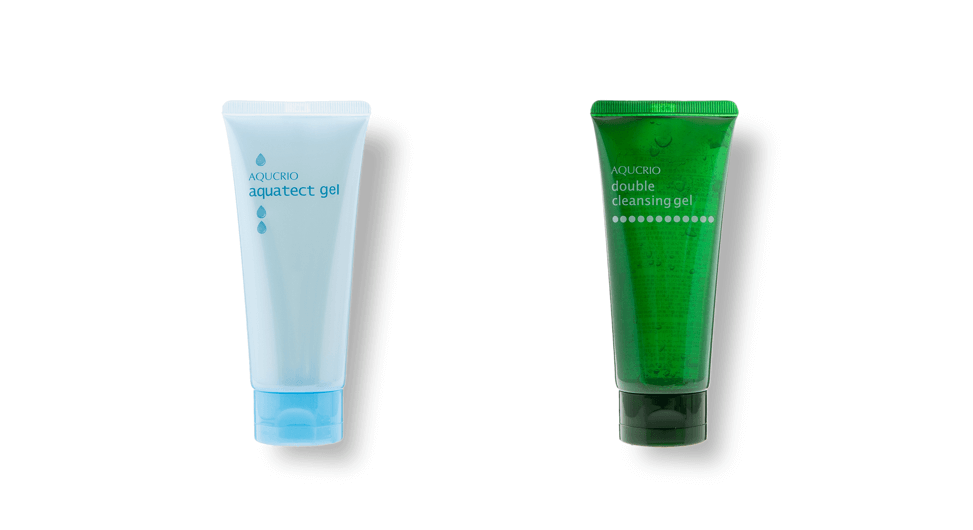

The cosmetics that fulfill low-irritation skincare are the [AQUCIRIO Series]. Now, you can try the “Aquatact Gel,” an all-in-one moisturizing product containing 16 types of moisturizing ingredients, and the “Double Cleansing Gel,” which allows for cleansing and face washing at once, with 30 days money back guarantee.
Moreover, three tests guaranteeing low irritation have been completed.
- Patch test
- Allergy test
- Stinging test
These tests confirm that symptoms such as inflammation, rash, and itching do not occur (※), allowing you to use them with confidence.
※The stinging test checks for sensations like stinging when applying cosmetics.
※Not all individuals will be free from allergies or skin irritation.
What is Aquatect Gel?

Aquatect Gel is a full-body moisturizing gel cream developed to hydrate extremely dry and sensitive skin.

It was initially marketed for facial skincare, but its high moisturizing power has earned it a reputation as a moisturizing gel cream that can be used on the entire body – regardless of gender, age, or skin type.
Recommended for... ・Facial skincare ・Hand care for hand eczema and dry hands ・Body moisturizing care ・Baby care
There are 2 reasons why Aquatect Gel has such a high moisturizing capacity.
1. Its optimal balance of oil and water replenishes both to the skin simultaneously
In order to moisturize dry skin, you must provide and maintain plenty of moisture in the skin.
Aquatect Gel has been developed to achieve a balance between maximum hydration content and oil content to maintain moisture within the skin.
Through repeated trial and error, we arrived at the golden ratio of 8(water):2(oil).
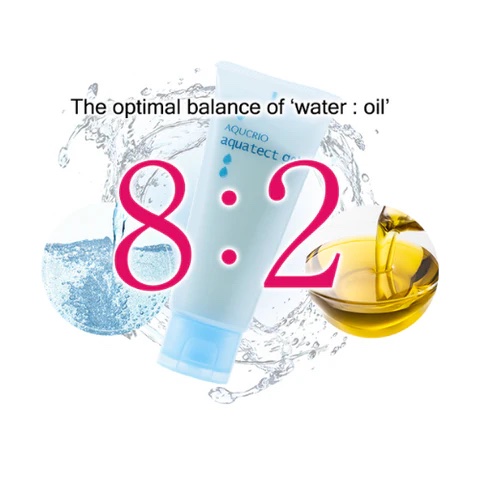
Hydration is quickly absorbed into dry skin, and oil prevents that hydration from evaporating.
This approach to moisture retention inside the skin is how Aquatect Gel achieves high moisturizing power.
2. The more its applied, the more the skin is moisturized
Aquatect Gel has a special structure that balances water and oil.
Therefore, with each application, moisture is supplied to the inside of the skin and oil to the surface of the skin.
The more it’s applied, the more moisturized the skin becomes.
This is what makes Aquatect Gel different from other creams. Other creams only create an oil film on the skin surface, no matter how many times it’s applied.
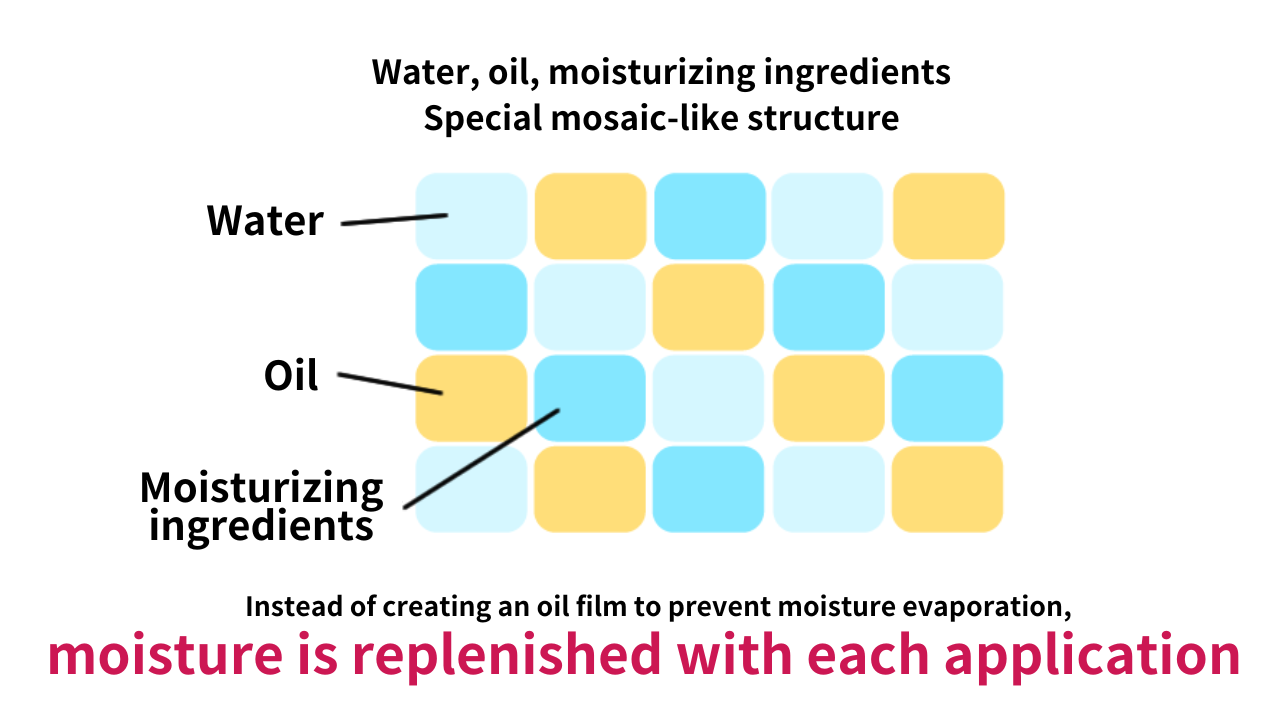
Because it’s a gel, it’s great for dry skin!
Aquatect Gel has a soft, jelly-like consistency that is plump, watery, and soft.

This gel consistency has the ability to minimize friction and irritation to the skin when applied.
Because of its elasticity, it acts as a cushion between your skin.
That’s why it can be spread gently even on the dryest, roughest skin.
Using the AQUCIRIO Series not only saves time and effort but also reduces the friction that irritates the skin to one-third of that caused by normal skincare, providing firmness and hydration to dry skin.
The results of continuous use of Aquatect Gel (moisturizing skincare) have proven that “skin hydration improved after four weeks,” so you can be confident in its effectiveness.

Double Cleansing Gel

Double Cleansing Gel is a facial cleanser for people who are suffuring by dry itchy skin. It does not contain foaming agents and can be used as both a makeup remover and a cleanser so that you can reduce irritation.
1.The balanced cleansing power of Double Cleansing Gel removes only “unnecessary sebum and dirt” while leaving “moisture” intact.
The main feature of Double Cleansing Gel is its “gentle cleansing power” that avoids over-washing. To protect the skin’s moisture, it prevents excessive sebum production due to dryness and reduces the visibility of pores.While thoroughly removing excess sebum and dirt, Double Cleansing Gel leaves your skin feeling moisturized after washing! This post-cleansing sensation is evidence that moisture remains on your skin.
Gel cleansing that does not irritate your skin
Double Cleansing Gel is a highly cushioned gel formula. It provides a more reliable elasticity than foam, forming a firm cushion between the skin and the palms of your hands, reducing friction on the skin. Friction is a cause of widened pores, clocked pore, and pimples. By reducing friction, Double cleansing gel helps your skin be more clean.

2-2. moisturizing care
If your skin condition is causing dryness and disrupted turnover, leading to facial roughness, moisturizing is essential.
The normal cycle of turnover is 28 days. Keratinocytes born in the basal layer move to the skin’s surface over 28 days.
When dryness and irritation impair the skin’s ability to maintain health, the skin’s renewal function also weakens, delaying the turnover cycle.
When turnover slows down, keratinocytes that should be expelled from the body remain. These remaining cells have completed their role, so they lack freshness and become dry and hard.
While several factors can disrupt turnover, the most common is “dryness.”
It is crucial to moisturize thoroughly.
Recommended skincare items for moisturizing care
For moisturizing skincare, AQUCIRIO “Aquatect Gel” is recommended. Its golden balance of water and oil allows for high moisturization. Aquatact Gel can simultaneously provide the effects of lotion, serum, emulsion, and cream, thus reducing frictional irritation to the skin.
The results of continuous use of Aquatect Gel (moisturizing skincare) have proven that “skin hydration improved after four weeks,” so you can be confident in its effectiveness.
Recommended for people who:
- Are troubled by roughness due to dryness
- Are unsure if their current skincare provides sufficient moisturization
- Are looking for highly moisturizing cosmetics
2-3. Perform sunburn care
Continuous exposure to large amounts of UV rays can disrupt the skin’s outer layer and decrease barrier function, leading to facial roughness.
For such cases, sunscreen is, of course, recommended.
You might think, “I already apply enough sunscreen!” However, if you do not select a product based on your skin condition and various features, the effectiveness of the sunscreen can quickly diminish.
For instance, consider the following types of sunscreen:
Sunscreen not suitable for sensitive skin
- Sunscreen with SPF 30 or higher
- Sunscreen containing UV absorbers
- Sunscreen without waterproof functionality
- Gel or lotion-type sunscreen
- Sunscreen without trial products
If your face feels rough, it can be considered that your skin has already accumulated damage, making it sensitive.
Does the sunscreen you have been using fit the description above?
One frequently overlooked aspect is the “waterproof function.” Because a lot of sweat flows over the face, sunscreen without waterproof functionality will quickly wash away. This renders the application of sunscreen meaningless.
Rather than judging solely by the SPF value, you need to consider your skin condition and the characteristics of the area where you apply the sunscreen when choosing a product.
3. Methods to Improve Rough Skin on the Face Besides Skincare
Improving roughness along the jawline requires care from both the outside and inside of the body. Here are four improvement methods for those troubled by roughness, so start incorporating these into your daily life right away.
3-1. Perform enzyme facial wash
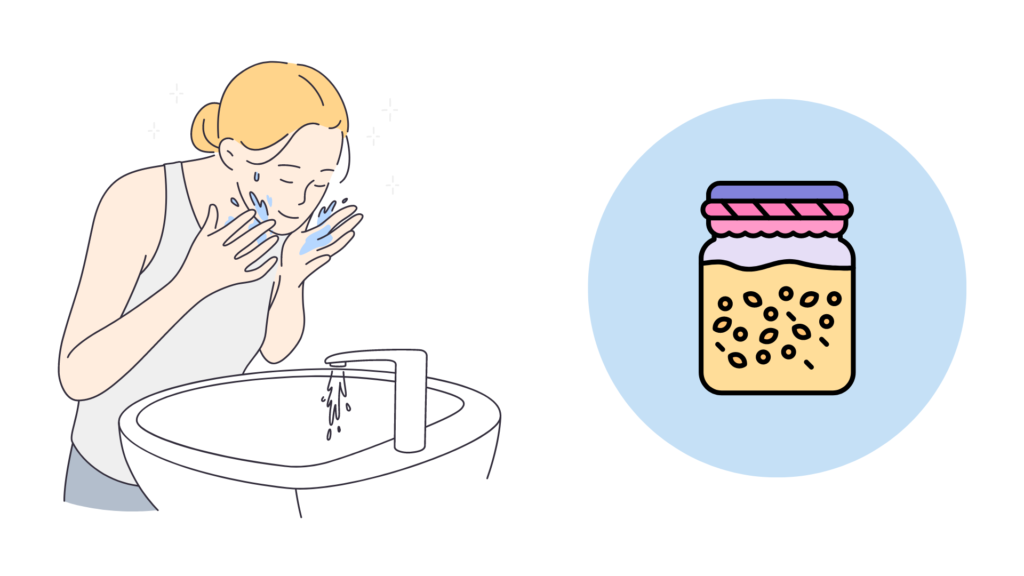
Enzyme facial wash uses the power of enzymes to wash away old keratin. One cause of roughness on the skin’s surface is the melanin-containing old keratin layer.
If you notice roughness on your face or jawline, using an enzyme facial wash daily is not a problem.
However, if you are concerned about skin dryness, consider incorporating enzyme washing about three times a week, tailored to your skin type and condition.
3-2. Reevaluate your diet

When your nutritional balance is disrupted, your skin lacks the nutrients necessary for proper turnover, leading to roughness on your face and jawline.
To improve facial roughness and achieve smooth, egg-like skin, it’s essential to consume a balanced diet rich in nutrients such as protein, vitamins, and minerals.
Specifically, the following foods are effective:
Protein: meat, fish, soy, etc.
Vitamin A: liver, eel, carrots, spinach, eggs, etc.
Vitamin E: almonds, avocados, sardines, canned tuna, etc.
Zinc: oysters, beef, liver, cheese, egg yolk, etc.
Focus on moisturizing skincare and sun protection, and maintain a nutritionally balanced diet to target roughness on your face and jawline.
4. Caution! Do not scratch rough skin even if itchy
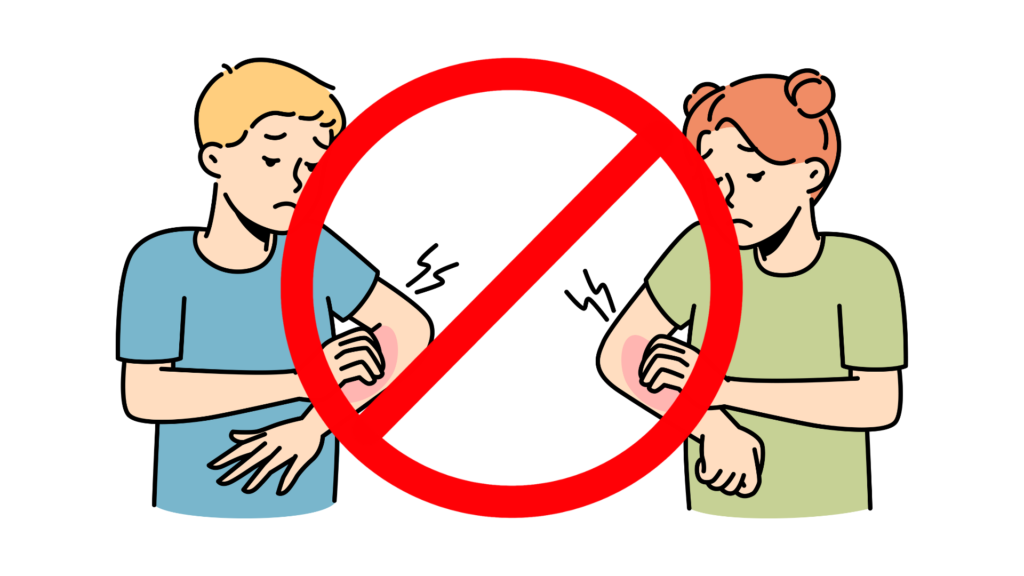
When roughness on the skin becomes severe, it can be very itchy, and you might feel an irresistible urge to scratch.
However, the way to treat itching is simply not to scratch.
If you really can’t stand it, try cooling the area to calm the itchiness.
When the air is dry, the skin also becomes dry and flaky, reducing barrier function.
This makes it easier to trigger itching.
Even slight irritants like UV rays and sweat can cause itching.
When your skin feels rough
and itchy, adhere to the rule of not scratching and simplify your skincare.
Since toners can easily irritate, using a low-irritation cream is also recommended.
2-3. Perform sunburn care
Continuous exposure to large amounts of UV rays can disrupt the skin’s outer layer and decrease barrier function, leading to facial roughness.
For such cases, sunscreen is, of course, recommended.
You might think, “I already apply enough sunscreen!” However, if you do not select a product based on your skin condition and various features, the effectiveness of the sunscreen can quickly diminish.
For instance, consider the following types of sunscreen:
Sunscreen not suitable for sensitive skin
- Sunscreen with SPF 30 or higher
- Sunscreen containing UV absorbers
- Sunscreen without waterproof functionality
- Gel or lotion-type sunscreen
- Sunscreen without trial products
If your face feels rough, it can be considered that your skin has already accumulated damage, making it sensitive.
Does the sunscreen you have been using fit the description above?
One frequently overlooked aspect is the “waterproof function.” Because a lot of sweat flows over the face, sunscreen without waterproof functionality will quickly wash away. This renders the application of sunscreen meaningless.
Rather than judging solely by the SPF value, you need to consider your skin condition and the characteristics of the area where you apply the sunscreen when choosing a product.
5. How to Handle Rough Skin on Other Parts of the Body
Even if you want to address rough skin on parts of the body other than the face, many people are unsure what exactly to do.
Regardless of the area, it’s essential to provide moisture, oil, and moisturizing ingredients. Here, we introduce points to eliminate roughness on the face, body, and soles of the feet.

5. How to Handle Rough Skin on Other Parts of the Body
Even if you want to address rough skin on parts of the body other than the face, many people are unsure what exactly to do.
Regardless of the area, it’s essential to provide moisture, oil, and moisturizing ingredients. Here, we introduce points to eliminate roughness on the face, body, and soles of the feet.
5-1. How to Improve Roughness on the Décolleté
To prevent roughness and bumps on the décolleté, keeping the area clean is crucial.
During sweat-prone seasons, frequently wipe your body with a towel or body sheet to maintain cleanliness.
UV rays also easily affect the décolleté, so apply sunscreen to the area when going out.
Most of the roughness on the décolleté consists of acne and warts.
Friction from hair and clothing, UV damage, sweat, and humidity can cause bacteria to proliferate and inflammation to progress, leading to roughness.
Additionally, lifestyle disruptions, stress, and poor circulation can also lead to skin troubles.
Keep your décolleté clean and adopt skincare practices that prevent acne and warts.
5-2. How to Improve Roughness on the T-Zone
For those concerned about roughness in the T-zone, review your face-washing and cleansing methods, and ensure you thoroughly rinse off shampoo and conditioner.
Most roughness in the T-zone is caused by clogged pores, sebum plugs, acne, and pre-acne comedones.
This is because the T-zone has a high amount of sebum and is a region where bangs often touch, making it prone to acne.
To improve roughness in the T-zone, focus on skincare that targets clogged pores, sebum plugs, and acne.
Additionally, hairline acne can also be caused by residue from shampoo, conditioner, and face wash.
Therefore, it’s also important not to let bangs grow too long.
5-3. How to Improve Roughness on the Body
To eliminate roughness on the body, it is essential to maintain a regular lifestyle, eat a balanced diet, and keep your body clean.
It is also important to moisturize.
Even if you moisturize your face thoroughly, are you neglecting your body?
To reiterate, moisturizing is not just about applying cream.
Moisturizing means providing water, oil, and moisturizing ingredients to the skin.
Body cream alone is insufficient.
Apply an amount of facial toner and take care to prevent dryness.
Summary
Rough skin on the face is caused by UV rays, dryness, stress, age, skin type, and sometimes by wearing masks or diseases.
While the causes may vary depending on the body part, it is universally important to provide water, oil, and moisturizing ingredients.
But before you think about changing your cosmetics because your skin roughness isn’t improving, please review how you are currently using them.
Are you using your current cosmetics correctly?
Is the timing and amount of application correct?
Is there a difference between the manufacturer’s recommended method and your own?
First, check these three things.
It’s very common to follow your own method of application, resulting in “insufficient effectiveness of the cosmetics.”
This can lead you to keep changing cosmetics without ever achieving the desired effect… which is something you want to avoid.
Use cosmetics that provide proper moisturization effectively and resolve your skin roughness.



コメント